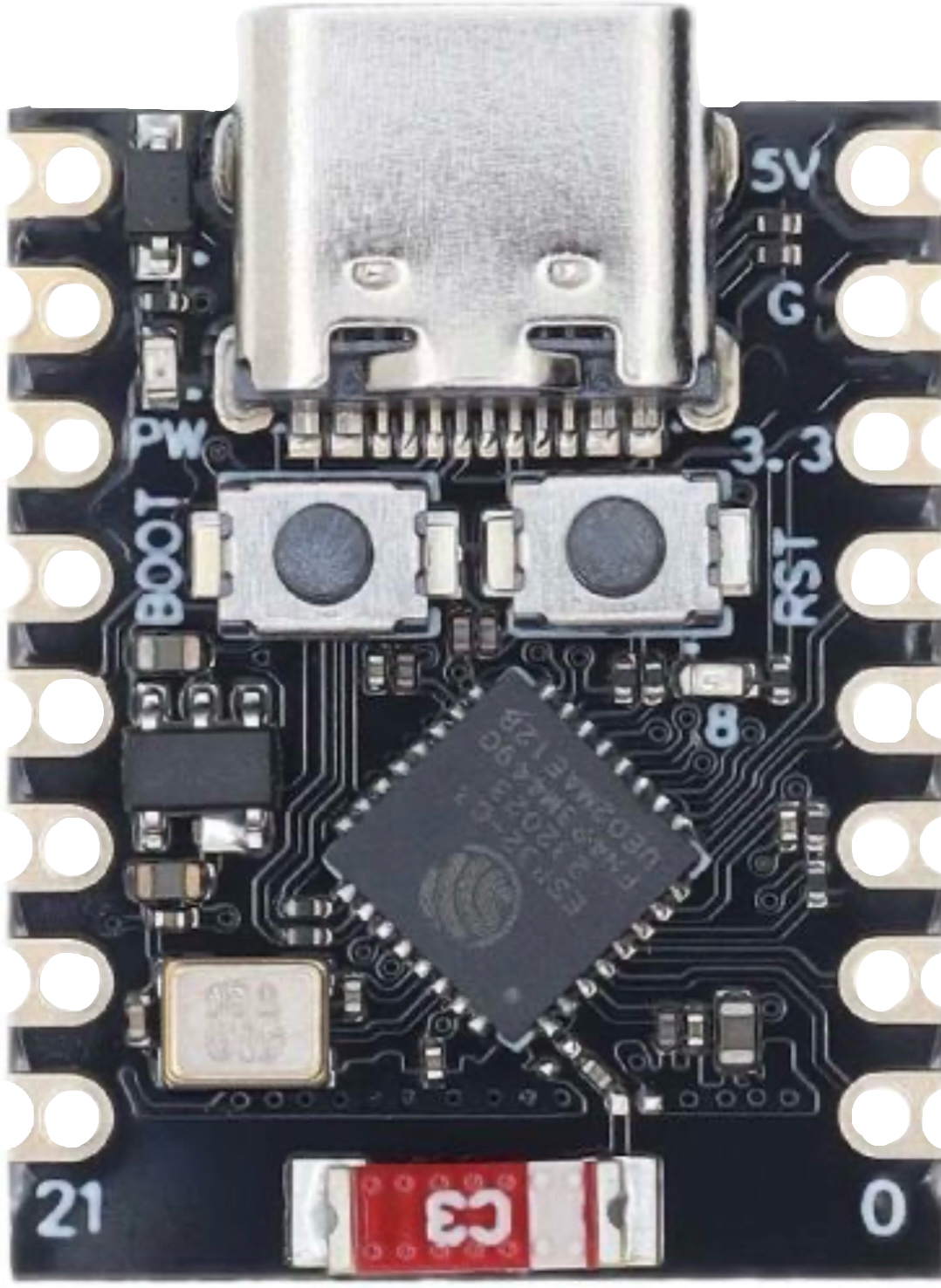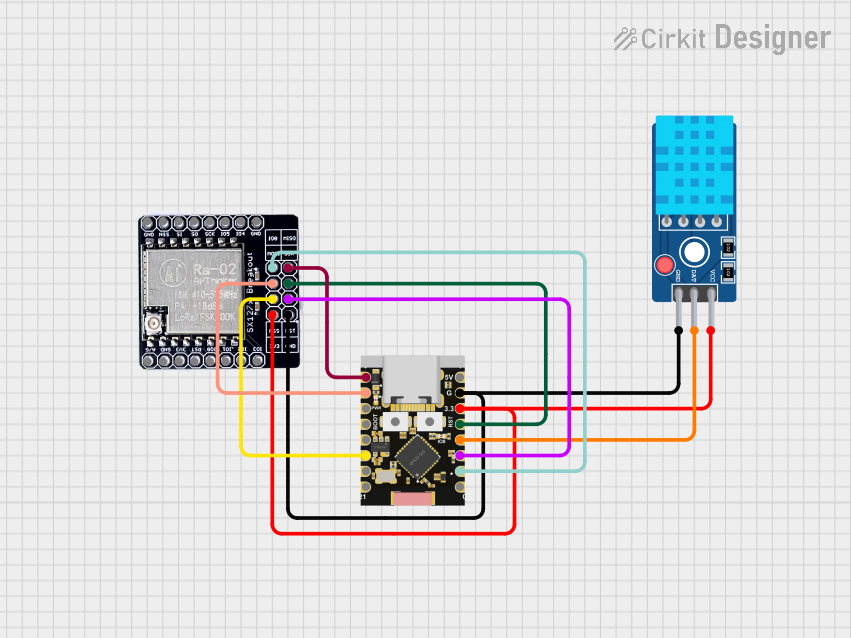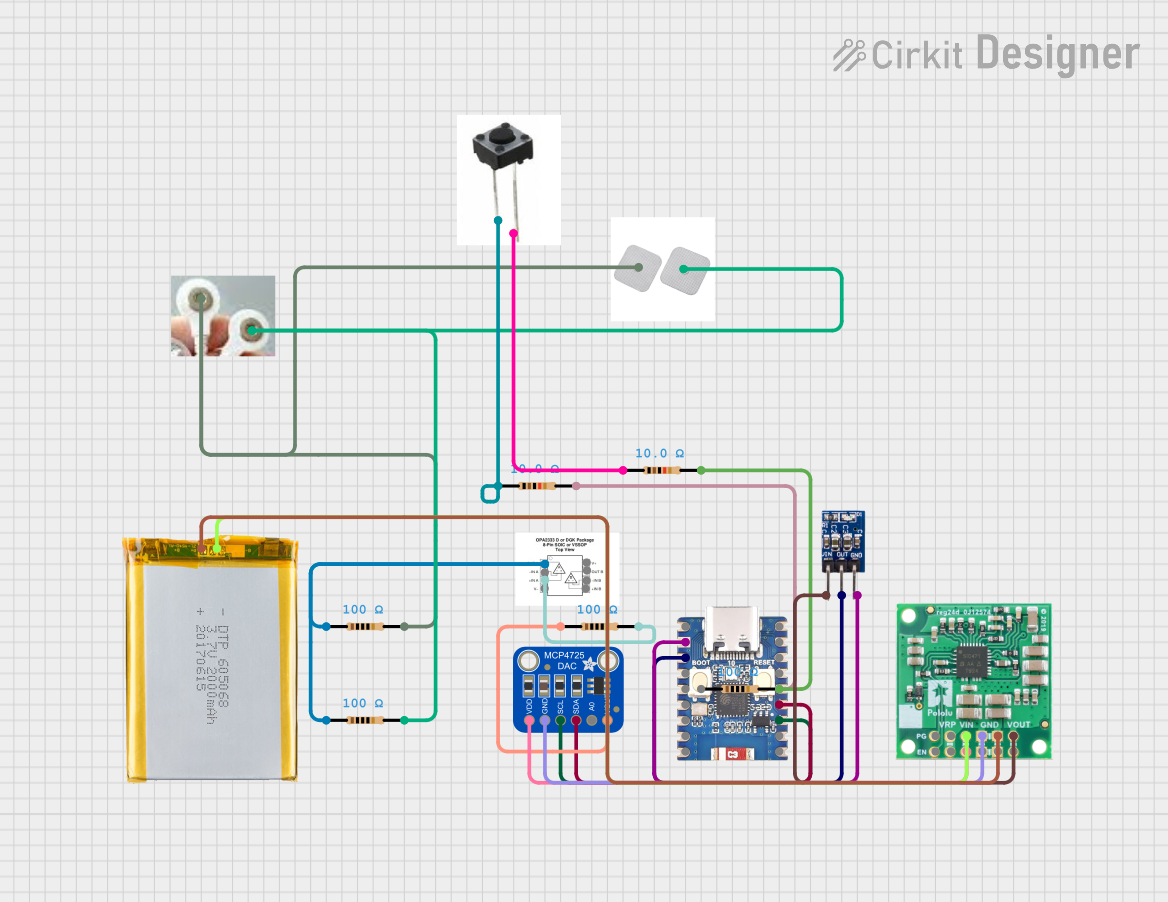
How to Use esp32 c3 super mini: Examples, Pinouts, and Specs

 Design with esp32 c3 super mini in Cirkit Designer
Design with esp32 c3 super mini in Cirkit DesignerIntroduction
The ESP32-C3 Super Mini, manufactured by Espressif, is a compact and powerful microcontroller designed for Internet of Things (IoT) applications. It features integrated Wi-Fi and Bluetooth Low Energy (BLE) capabilities, making it ideal for wireless communication in a wide range of projects. With its low power consumption, high performance, and small form factor, the ESP32-C3 Super Mini is well-suited for applications such as smart home devices, wearables, industrial automation, and more.
Explore Projects Built with esp32 c3 super mini

 Open Project in Cirkit Designer
Open Project in Cirkit Designer
 Open Project in Cirkit Designer
Open Project in Cirkit Designer
 Open Project in Cirkit Designer
Open Project in Cirkit Designer
 Open Project in Cirkit Designer
Open Project in Cirkit DesignerExplore Projects Built with esp32 c3 super mini

 Open Project in Cirkit Designer
Open Project in Cirkit Designer
 Open Project in Cirkit Designer
Open Project in Cirkit Designer
 Open Project in Cirkit Designer
Open Project in Cirkit Designer
 Open Project in Cirkit Designer
Open Project in Cirkit DesignerCommon Applications and Use Cases
- Smart home automation (e.g., connected lights, thermostats)
- Wearable devices with wireless connectivity
- Industrial IoT sensors and controllers
- Remote monitoring and data logging
- Wireless communication bridges
- Prototyping and development of IoT solutions
Technical Specifications
The ESP32-C3 Super Mini is based on the ESP32-C3 microcontroller, which features a RISC-V single-core processor. Below are the key technical details:
Key Technical Details
- Processor: RISC-V 32-bit single-core, up to 160 MHz
- Flash Memory: 4 MB (onboard)
- RAM: 400 KB SRAM
- Wi-Fi: IEEE 802.11 b/g/n (2.4 GHz)
- Bluetooth: BLE 5.0
- Operating Voltage: 3.3V
- Power Consumption: Ultra-low power in deep sleep mode (~5 µA)
- GPIO Pins: 15 (multipurpose, including ADC, PWM, I2C, SPI, UART)
- Dimensions: 18 mm x 18 mm (approx.)
- Operating Temperature: -40°C to +85°C
Pin Configuration and Descriptions
The ESP32-C3 Super Mini has a compact pinout. Below is the pin configuration:
| Pin Name | Function | Description |
|---|---|---|
| 3V3 | Power Input | 3.3V power supply input. |
| GND | Ground | Ground connection. |
| GPIO0 | General Purpose I/O | Can be used for input/output, ADC, or other functions. |
| GPIO1 | General Purpose I/O | Multipurpose pin, supports UART TX. |
| GPIO2 | General Purpose I/O | Multipurpose pin, supports UART RX. |
| GPIO3 | General Purpose I/O | Multipurpose pin, supports I2C SDA. |
| GPIO4 | General Purpose I/O | Multipurpose pin, supports I2C SCL. |
| GPIO5 | General Purpose I/O | Multipurpose pin, supports SPI MOSI. |
| GPIO6 | General Purpose I/O | Multipurpose pin, supports SPI MISO. |
| GPIO7 | General Purpose I/O | Multipurpose pin, supports SPI CLK. |
| EN | Enable | Active-high enable pin. Pull low to reset the module. |
| RST | Reset | Active-low reset pin. |
| ADC | Analog Input | 12-bit ADC input for analog signal measurement. |
| TXD | UART Transmit | UART transmit pin for serial communication. |
| RXD | UART Receive | UART receive pin for serial communication. |
Usage Instructions
How to Use the ESP32-C3 Super Mini in a Circuit
- Power Supply: Provide a stable 3.3V power supply to the 3V3 pin and connect the GND pin to ground.
- Programming: Use a USB-to-UART adapter to connect the TXD and RXD pins to your computer for programming. Ensure the EN pin is pulled high during operation.
- GPIO Usage: Configure the GPIO pins as needed for your application (e.g., digital input/output, ADC, I2C, SPI).
- Wi-Fi and Bluetooth: Use the onboard Wi-Fi and BLE capabilities for wireless communication. Libraries such as
WiFiandBLEin the Arduino IDE can simplify development.
Important Considerations and Best Practices
- Voltage Levels: Ensure all connected peripherals operate at 3.3V logic levels to avoid damaging the module.
- Deep Sleep Mode: Use deep sleep mode to minimize power consumption in battery-powered applications.
- Antenna Placement: Avoid placing metal objects near the onboard antenna to ensure optimal wireless performance.
- Firmware Updates: Regularly update the firmware to benefit from the latest features and security patches.
Example Code for Arduino UNO
Below is an example of how to connect the ESP32-C3 Super Mini to an Arduino IDE and use it to connect to a Wi-Fi network:
#include <WiFi.h> // Include the Wi-Fi library for ESP32
// Replace with your network credentials
const char* ssid = "Your_SSID";
const char* password = "Your_PASSWORD";
void setup() {
Serial.begin(115200); // Initialize serial communication
delay(1000);
// Connect to Wi-Fi
Serial.println("Connecting to Wi-Fi...");
WiFi.begin(ssid, password);
while (WiFi.status() != WL_CONNECTED) {
delay(500);
Serial.print(".");
}
Serial.println("\nWi-Fi connected!");
Serial.print("IP Address: ");
Serial.println(WiFi.localIP()); // Print the assigned IP address
}
void loop() {
// Add your main code here
}
Troubleshooting and FAQs
Common Issues and Solutions
Module Not Responding
- Cause: Incorrect power supply or wiring.
- Solution: Ensure the module is powered with 3.3V and all connections are secure.
Wi-Fi Connection Fails
- Cause: Incorrect SSID or password.
- Solution: Double-check the network credentials in your code.
Serial Communication Not Working
- Cause: Incorrect baud rate or wiring.
- Solution: Verify the baud rate in your code matches the serial monitor and check TX/RX connections.
Bluetooth Not Discoverable
- Cause: BLE not initialized in the code.
- Solution: Ensure the BLE library is included and properly configured.
FAQs
Q: Can the ESP32-C3 Super Mini operate on 5V?
A: No, the module operates at 3.3V. Using 5V can damage the module.Q: How do I reset the module?
A: Pull the EN pin low momentarily or use the RST pin.Q: Can I use the ESP32-C3 Super Mini with the Arduino IDE?
A: Yes, the ESP32-C3 is fully supported by the Arduino IDE. Install the ESP32 board package to get started.Q: What is the maximum range of Wi-Fi and BLE?
A: The range depends on environmental factors, but typically Wi-Fi can reach up to 50 meters indoors, and BLE can reach up to 10 meters.
This documentation provides a comprehensive guide to using the ESP32-C3 Super Mini effectively in your projects.